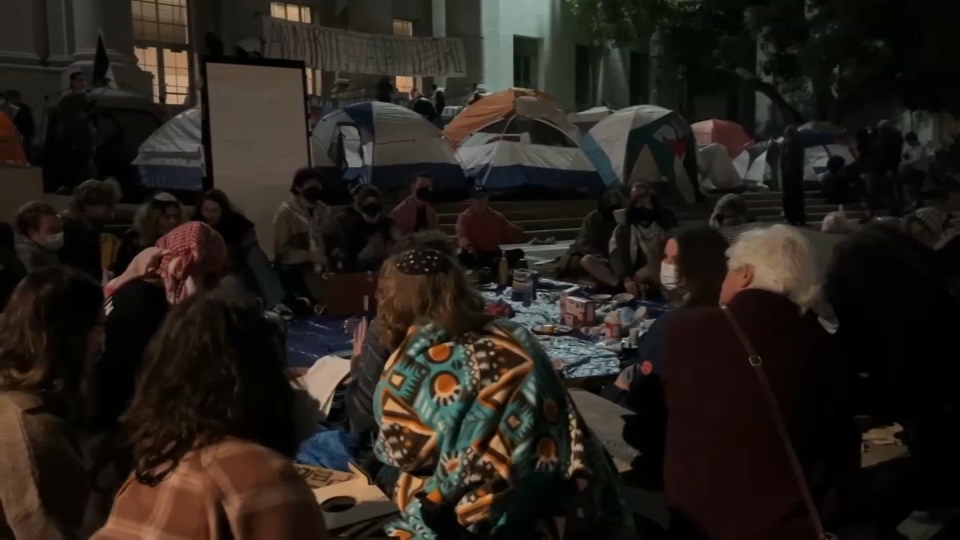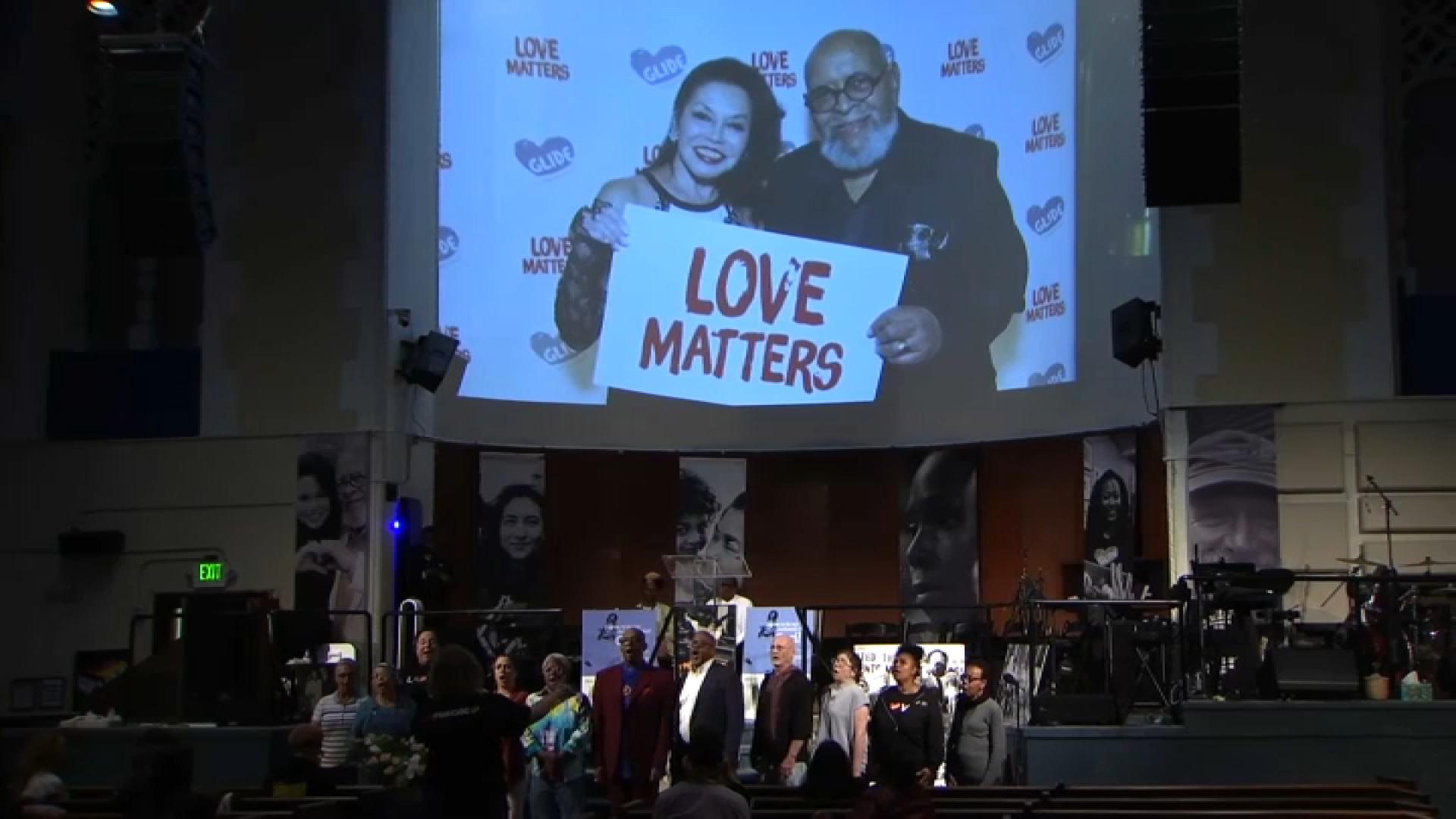What to Know
- "Creator" has designed a machine that makes a $6 hamburger from whole ingredients while you watch
- The new burger spot joins a growing list of robotic restaurants in San Francisco and Silicon Valley
- Robo-restauranteurs say the 'bots help them serve better food faster, at lower prices
With a faint buzzing sound, a giant machine sucks a brioche hamburger bun out of a clear plastic tube, and starts sawing it in half with a bread knife.
So begins the brief life of a burger at Creator — a restaurant where the first human hands to touch your meal are your own — just before you devour it. Creator is the latest in a growing collection of Bay Area restaurants that feature robots making and serving food — and after eight years of tinkering in a garage, it's finally unleashing its perfectly-cooked goodness to the watering mouths of San Francisco's bustling South of Market lunch crowd.
Creator eschews the industrial robots and ordering kiosks of its fellow robo-restaurants, opting for a totally custom “culinary device” that chops up whole ingredients and assembles burgers in a glass enclosure while you watch. - Spherical Image - RICOH THETA
As Creator's creators fine tuned their machine, we stayed busy catching up on the brief history of robotic restaurants in the Bay Area — which, by some accounts, started in earnest about three years ago.
2015: Eatsa
Local
With two restaurants in the densest part of downtown, Eatsa is going after a quintessentially San Franciscan demographic: busy professionals who have no time for lunch, but still want to eat healthy.
With two restaurants in the densest part of downtown, Eatsa is going after a quintessentially San Franciscan demographic: busy professionals who have no time for lunch, but still want to eat healthy. - Spherical Image - RICOH THETA
On entering the restaurant, you may find a single employee to greet you — but no other humans in sight. Ordering is done from your phone, or at a wall of iPad kiosks with credit card slots. The menu contains every imaginable variety of quinoa bowl: a bed of the protein-packed superfood grain topped with meat or veggies, and perhaps an egg. Protein is the name of the game here.
Founder Tim Young said he wanted to get rid of the classic lunchtime tradeoff between eating quickly and eating healthy. But he wound up gaining attention for something else: the wall of glass cubbies where food is delivered just moments after ordering. It resembles the automats that sprang up in New York and Philadelphia a century ago, where sandwiches and pies were purchased from glass cases by inserting nickels.
"Honestly, we didn't even know about the automat until we had launched, and people kept asking us about the automat," Young confessed.
2016: Zume Pizza
Mountain View loves a good pepperoni pizza. So says the data gathered by Zume Pizza, which is headquartered in that city, and aims to reinvent the age-old field of pizza logistics.
Mountain View loves a good pepperoni pizza. So says the data gathered by Zume Pizza, which is headquartered in that city, and aims to reinvent the age-old field of pizza logistics. - Spherical Image - RICOH THETA
Zume calls its kitchen a "co-bot" environment, where robots with human names move in eerily human ways — spreading sauce with a ladle, and shoveling pizza crusts in an out of an oven. The pies are partially baked, then loaded onto "kitchen trucks," where artificial intelligence predicts how many veggie pizzas Sunnyvale wants tonight, and whether the highest demand will be in Palo Alto or Santa Clara after the football game.
Zume Pizza’s kitchen trucks park in a location near where the most orders are expected, and finish baking the pizzas when they’re ordered — so a driver can whisk them around the corner to your house before they get soggy. - Spherical Image - RICOH THETA
The kitchen trucks park in a location near where the most orders are expected, and finish baking the pizzas when they're ordered — so a driver can whisk them around the corner to your house before they get soggy.
Zume Pizza is slowly adding more cities — not by building new restaurants, but by adding more kitchen trucks. The company plans to start service in San Jose on October 3.
2017: CafeX
After a successful pop-up in San Francisco's Metreon, CafeX opened its first brick-and-mortar cafe on Market Street, staffed by one very fast (and polite) robot. Like Eatsa, CafeX gets rid of the line by letting customers order from iPad kiosks, or from their own smartphones.
CafeX opened its first brick-and-mortar cafe on Market Street, staffed by one very fast (and polite) robot. Customers can order at iPad kiosks, or from their own smartphones. - Spherical Image - RICOH THETA
The brains and brawn of the cafe are a pair of highly automated espresso machines and a friendly industrial arm that dances and waves when it's not filling orders. The robot is fast when it can be, and gentle when it needs to avoid spilling. But the real magic is software, the founders tell us — software that allows them to use higher-quality (and perhaps more finicky) coffee beans, since the machines are extremely consistent at grinding and brewing them.
While other chains advertise coffee made lovingly by hand, CafeX points out its robots are still made by hand — and version 2.0 is already being tested out at Battery and Bush St., replete with a nitro cold brew tap and a few other tricks up its sleeve.
2018: Yo-Kai Express
Some people get hangry. But when Andy Lin's stomach growled at midnight three years ago, he knew just what he had to do.
Yo-Kai Express, situated next to the original CafeX in San Francisco’s Metreon, is a fully-autonomous machine that spits out a piping hot bowl of Japanese ramen to hurried workers and late-night moviegoers. - Spherical Image - RICOH THETA
Situated next to the original CafeX in the Metreon, Yo-Kai Express is Lin's creation: a fully-autonomous machine that spits out a piping hot bowl of Japanese ramen at any time of the day or night. A "yo-kai" in Japanese is a ghost that can appear anywhere, at any time.
Much like Eatsa, there are humans making the meals here — not inside the machine, but in a kitchen across town. The noodle bowls are frozen, sealed, and loaded into the machine, which keeps them cold until you order them. Lin's team has developed a defrosting method that doesn't damage the noodles, to keep their texture authentic.
The machine also offers Vietnamese pho, and will soon offer Italian pasta dishes too. Lin says his next machines will go in airports, factories and college dormitories — all the spots where hungry people burn the midnight oil.
2018: Creator
Arguably the most ambitious robo-restaurant yet, Creator eschews the industrial robots and ordering kiosks of its predecessors, and starts completely from scratch. The two robots, or "culinary devices" making burgers, are enclosed in modern woodwork with big glass windows, adding some literal transparency to the process of making America's favorite sandwich.
Creator is based on the concept that a better burger comes from fresher ingredients — and that freshness is often limited by human factors, like the need to slice vegetables hours before the lunch rush, or the sheer difficulty of the revered "vertical grind" method for making a freshly-ground hamburger patty that stays together on the bun, but melts in the mouth. When your kitchen is staffed by a machine, all those problems go away.
Before lunchtime, Creator's staff stocks the machine with whole tomatoes, onions, pickles, lettuce, blocks of cheddar cheese and mounds of whole chuck and brisket. Then, employees open the doors and take your order — face-to-face — before you head over to watch the machine assemble your sandwich. It's a tiny, autonomous assembly line, where each vegetable is sliced by a custom tool made especially for that purpose, and fresh-grated cheese melts onto a perfectly-buttered bun before your eyes.
At least three of the Bay Area's robotic restaurants see a future in software licensing: making money by allowing other restaurants to use the software and hardware they built for their own kitchens and dining rooms. And if Creator's initially-favorable reviews continue, Silicon Valley forecaster Paul Saffo said he wouldn't be surprised if it's in the cards for them too.
"I have no doubt that you could create an algorithm that could make the perfect burger," Saffo said. "We could well enter a world where the cost of your burger is 90 percent intellectual property, and 10 percent the actual raw inputs."
Watch the video above for a whirlwind tour of the Bay Area's robotic restaurants!



